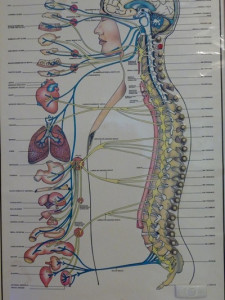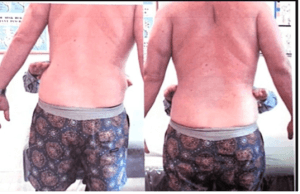“The Evidences of the Association, in Dissected Cadavers, of Visceral Disease with Vertebral Deformities of the Same Sympathetic Segments Medical Times, November 1921, pp. 1-7″
“The object of these necropsies was to determine whether any connection existed between minor curvatures of the spine, on the one hand, and diseased organs on the other.” Dr Henry Winsor’s research proved that subluxations precede an array of organ malfunctions.
Dr Winsor explained that a pelvic subluxation contributed toward a mild scoliosis, articular fixation and chronic nerve interference with an eventual outcome of many serious organic disorders. “In general, we found the ordinary diseases of adult life.”
My research focused on: Is this century-old research still important today? My research involved seeing if Winsor’s “pelvic subluxations” still contribute toward a mild scoliosis with vertebral fixations, in today’s patients and if so are those misalignments and fixations reducible?


Dr Winsor reported an alarming array of organ-related symptoms that appeared to result from the negative impact of long-term pelvic and spinal joint malfunctions. Importantly, the documented symptoms include, “larynx cancer, fatty degeneration of the thymus, pleural adhesions, pleural effusions, pneumonia, tuberculosis, pulmonary edema, pulmonary congestion, lung fibrosis, bronchitis, enlarged lymph nodes, influenza, heart endocarditis, heart dilatation, heart muscle degeneration, pericarditis, aortic aneurysm, liver cirrhosis, liver swelling, liver tumors, enlarged spleen, atrophied spleen, inflamed spleen, pancreas degeneration, cystic kidneys, appendicitis, uterine adhesions, prostate hypertrophy, prostate atrophy, cystitis, hydrocele, osteomyelitis of the tibia, etc.
Placing equal hand pressure on the iliac crests and comparing the height of each hand demonstrates pelvic tilt. Usually, levelling the pelvic crests coincides with the spinal curve reducing or going, and the shoulder height becoming more level.

A tilted pelvis can be Un-tilted.
Pelvic subluxations often initiate reduced capability to raise one leg or both legs, when the patient lies face down. Again usually, pelvic adjustments can restore much of that limited range of motion. Not all of our patients who had this impaired leg-lifting capability were unaware of this limitation.
To see the leg lifting range before the adjustment rb.gy/fr4i1y
To see the leg lifting range after adjustment https://t.ly/AQV4u
Regarding the “mild scoliosis”, palpating both the mid-thoracic and costosternal joints revealed fixations and local tenderness to the touch. Mobilising those joint fixations reduces both their tenderness and the “mild scoliosis”.
Winsor’s exceptional massive research effort involved three studies, his team dissected a total of 75 human and 22 cat cadavers, finding 221 diseased organs. Time has not discredited his propositions.
The surprise of my research was that the body allows patients to remain unaware of the existence of pelvic structural and joint malfunctions and their possible future dire consequences.
Conclusion: Windsor’s lateral pelvic tilt does cause a mild lateral lumbar curve and uneven shoulder height. Many of our patients do indeed display Winsor’s subluxation-related structural anomaly.
Please check if your family members and close acquaintances have 1) unlevel pelvic crests and shoulder heights. 2) Restricted leg lift capability when lying prone. If they do encourage them to have a chiropractic check-up.
Yours for better health,
